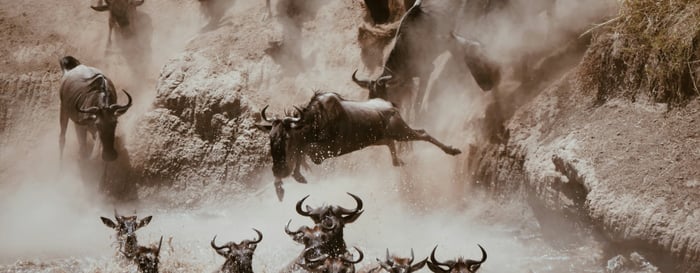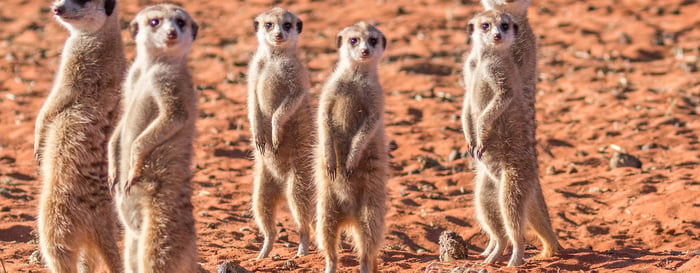Tina Duong has eagle eyes. The Cardamom Mountains’ jungle we are trekking through is his world. It’s his home, his playground and his place of work. He works in harmony with the rainforest that makes up the majority of Cambodia’s western Koh Kong province, and he comes well-equipped with stacks of local knowledge. This makes him the perfect person to guide us through one of Southeast Asia’s largest unbroken rainforests.
He pauses as he spots something in the undergrowth, crouching to pluck a shrivelled brown, almost heart-shaped root from the ground. Like a school show and tell session, he passes it around, apologising for not knowing its scientific name. Instead, he calls it “elephant’s lung”, adding it is a key ingredient in the medicinal tea made by his grandmother when he was a child.
We’re half-way on a trek through a fraction of sprawling Botom Sakor National Park. As Cambodia’s largest national park, it takes in 1800 square metres of gently sloping lowland hugged by patches of evergreen woods, tracts of grass plains, dense tropical rainforest, coastal flood plains and swamps. It is also home to a collection of rare wildlife. Sun bears, pangolin, clouded leopards, dhole (wild dog) and the greater hog badger – all listed as vulnerable or endangered – live in the area.

While it can be difficult to spot a greater hog badger, it's easier to spy the wild pigs, civets, macaques and deer that also inhabit the jungle. The birdsong that rings through the trees alongside the at-times deafening chorus of cicadas comes from a range of species, includes the rare Malayan night heron, endangered Asian woolly necked stork, green peafowl and colourful stork-billed kingfishers.
The area’s rich collection of flora and fauna has seen it pillaged by illegal loggers and poachers in recent decades. As we stop for a break on the fringe of a small pond almost hidden by a web of twisted branches, Tina says the forest that surrounds us is a fraction of what once stood. He recalls watching the towering trees he grew up among being felled by illegal loggers trading in precious timbers that once dotted the jungle, most notably rosewood.
Elsewhere, large patches of rainforest were razed for agricultural development, such as palm oil and rubber tree farms. He adds swathes of wildlife teeter on the brink of extinction, with poachers hunting critically-endangered animals, such as the pangolin, to sell on the black market.

My day had started at 5am, when I’d awoken to apocalyptic claps of thunder and lashing rain against the sturdy canvas of my safari-style tent. We’d picked a daring time to visit, the tail-end of monsoon season when the signature downpours start to subside. While this is my favourite time in Cambodia – the country’s mass of parched orange land sparks to life, transforming into a patchwork of shimmering emerald paddies – as the sky growled and the rains whipped, my excitement was marginally hampered at the thought of braving the jungle in heavy rain.
In keeping with typical Cambodian monsoon weather, the deluge was over within a couple of hours and when we set off at 7am, the sun was piercing a cloudless sky. The first leg of our journey was kayaking along a 7km stretch of Preak Tachan River, which snakes through the landscape.
As we paddled along the waterway, a calm wave of confusion washed over me as I attempted to navigate the unfolding jungle mirage. In the same way Magic Eye puzzles baffled me as a child, my brain scrambled to differentiate the land from the small tributary we were kayaking along, its smooth surface perfectly mirroring the thick jungle foliage that flanks us. Crystal clear waters revealed a cobweb of intertwining roots criss-crossing through a riverbed of white sand, the calm surface disturbed only by dancing insects and our swishing paddles. The call of nature, the only sound to interrupt the silence.

About an hour later, we docked the kayaks and climbed the gentle slopes of a hill. As we arrived at its peak, clucking chickens scarpered from the entrance of a makeshift wooden shack that Tina tells us is Preak Tachan Rangers Station, one of just a handful in the sparse area serving as bases for the Wildlife Alliance rangers who sweep the forest in search of hunters and loggers.
He introduces me to head ranger, Chum Kheng. Small with a wiry but muscular frame, his bright smile softens his appearance. He’s tasked with the tough task of protecting the forest. He leads us inside to a sobering cache of seized weapons. Rusty chainsaws, ageing handmade rifles, tangled webs of green netting and wire snares line the wall. Kheng tells us this is just a fraction of the haul his team has gathered during their five years of operation.
A little later, one of his colleagues emerges from the forest. Sporting full camouflage gear, sunglasses, a machete and rifle, he’s our escort on the trek through the jungle back to camp. While the rains held off, months of monsoon had left their mark and submerged large parts of the forest floor in bizarrely translucent water. Tina tells us a pay-off for visiting during monsoon is the clear waters that pour from the mountains, a trait that disappears in the dry months.

As we wade through babbling brooks and along water-logged trails – any hanging foliage sliced out of the way by the machete-wielding ranger –Tina recognises the distinct calls of gibbons and birds. He points out red squirrels as they dart among the treetops and catches me before I pierce my hand on giant razor-sharp thorns that shield shrubs, steering me away from poisonous moss that clings to tree trunks.
After about four hours, we arrive back exhilarated yet exhausted and sink into the minimalist luxury offered at Cardamom Tented Camp’s glamping eco-resort for a spectacular sunset, followed by a well-deserved feast under a canopy of stars in preparation for the next day’s jaunt through the jungle.
Mobile Migration in Tanzania
Serengeti & Northern Tanzania Ngorongoro Crater & Lake Manyara Tanzania Africa
- The beauty of the Ngorongoro Crater, a UNESCO World Heritage site
- Daily nature drives across a landscape including 25,000 animals
- Guided walks, sundowners and Maasai cultural experiences
- A hot-air balloon flight over the open savannah at sunrise
- Witnessing the wildebeest migration from Serengeti National Park
The Best of Southern Central Namibia
Sossusvlei Swakopmund Namibia Africa
-
Spot hyenas, jackals, antelopes and wild cats at NamibRand Reserve, Africa
-
Watch the sunrise near the red dunes of Sossusvlei
-
Discover the avenues and colonial architecture of Swakopmund
-
Explore Deadvlei, a white, salt claypan, dotted with ancient trees
-
Visit Namibia’s wetlands, and see flamingos and springbok in a 4X4








